So it’s surprising to discover that Star’s new V Star 1300 Deluxe truly has zero competition. There simply isn’t another production, mid-size, quote-unquote bagger out there. Every other semi-dressed tourer on the market features a large-displacement engine, and any bagged bike with an engine in this displacement range has a windshield rather than a fairing and its saddlebags are likely leather – or, if they are hard-molded, leather-wrapped. Star noticed a hole in the façade of Bagger Nation, and this new motorcycle fills it nicely.

Featuring a fork-mounted batwing-style fairing and hard molded, color-matched saddlebags, the V Star 1300 Deluxe is a fully realized bagger whose engine is smaller and lighter than, say, a Street Glide’s or Vaquero’s, but still features plenty of power for the long haul. Further, because it’s in what Star execs referred to as the Casual Full Dress category, it has some, but not all, of the bells and whistles that make up a full dresser, keeping costs down.
Simply put, it’s a bagger that’s accessible to more than just baby boomer males. While it rocks comparable dimensions to the large displacement baggers – its 27.2-inch seat height and 66.5-inch wheelbase put it right up there with the big boys – it feels considerably lighter than any other production bagger on the market, and handles accordingly. And with an MSRP of $13,690, the 2013 V Star 1300 Deluxe costs anywhere from $3400 to $6000 less than any of them.
At first glance, the V Star 1300 Deluxe closely resembles the 1854cc Stratoliner Deluxe that Star has been offering since 2010. For MY2013, however, that bike was put on hold to focus on filling this mid-sized hole in the bagger marketplace.
Like the Strat D, the V Star Deluxe also has speakers and a GPS mounted into its fairing, but unlike its big brother these features are now fully fleshed out. The XM Satellite Radio- and Bluetooth-equipped Garmin Zumo 665 GPS is mounted into the dash, as on a car, and your iPod/iPhone/MP3 player now connects to a jack in the left saddlebag, safe from the elements and prying eyes.
The removable Garmin unit is conveniently high and front-and-center, and is easily actuated with gloved fingers. That’s important, because if you want to utilize the GPS or change the XM station, you need to touch the screen. Obviously, this is a function that should be performed while stopped but, considering the unit’s location directly under the windscreen, it’s not difficult to do while rolling straight and steady.
Unlike some other units we’ve heard, the V Star’s audio system kicks out plenty of crisp, clear sound that’s better, even, than the Stratoliner Deluxe’s. As far as sound quality, this may be the best production stereo this writer has ever enjoyed. Music, voices, and turn-by-turn directions are all easy to hear at highway speeds.
The addition of XM is genius for obvious reasons; owners of the Garmin 665 – and therefore, this motorcycle – would be foolish not to subscribe, if only for its local weather and traffic bands.
As for those highway speeds, Star’s new bagger is a heckuva runner. Its 1304cc V-Twin (same mill that pushes the Stryker) has plenty of pulling power for getting up the onramp and over into the fast lane. Its gears, actuated with a slick heel-toe shifter, are longer in the tooth at the top end than the Stryker’s – ideal for highway cruising and touring. The V-Twin comes up short in only one area. The ratio gap between second and third gears is large enough that neither cog feels ideal for mid-range speeds, especially when climbing a hill. We look forward to seeing how the Vee-Dee performs loaded with luggage and with a passenger on its pillion.
But this midsize bagger isn’t about performance; it’s about comfort and value – two qualities it has in spades. Its saddle is wide and cushy, and its appointments are more than just serviceable. The long floorboards are plenty wide, and the tall windscreen is extremely effective at pushing the elements around the rider’s head and torso. On our hot day test ride, I wished more air would come around it.

My only complaint is a personal nitpick, but because I’m an average-sized guy it’s worth pointing out: the windscreen tops out at just above eye level for this 5’11” rider. I could barely look over it, so more often than not I found myself slouching slightly to look through the Lexan. For a long-haul tour, though, it would be tremendous, and for many of the journalists on our one-day ride, it was fine just the way it is.
With 7.5 gallons of space in each saddlebag, cargo is ported by two of the largest compartments we’ve seen on any bagger; big enough, even, to close around my three-quarter lid while I tried out a new half-helmet.
In its current iteration, the VStar 1300 Deluxe lacks full-dress touring amenities like cruise control and ABS, which helps keep its cost down. But those haven’t been ruled out as optional accessories in the future. In the meantime, more than 130 accessories are available, many cosmetic for personalization and about half of them licensed from noted aftermarket manufacturers like Kuryakyn and Arlen Ness. Also available are backrests and passenger floorboards designed to enhance long-range touring comfort.
To call the V Star 1300 Deluxe the Stratoliner Deluxe’s little brother wouldn’t be far from the truth. Considering the vast improvements made here, don’t be surprised to see the Strat D return in MY14 with a similar dashboard layout. For now, its little brother is a more than capable semi-dressed tourer with the power, handling, technology and visual panache to satisfy any bagger fan. And it’s the only bagger out there with the accessibility in both size and price to attract new bagger fans who always thought themselves too small or too poor to have one of their own. And that’s no exaggeration.
Source : http://www.motorcycle.com/















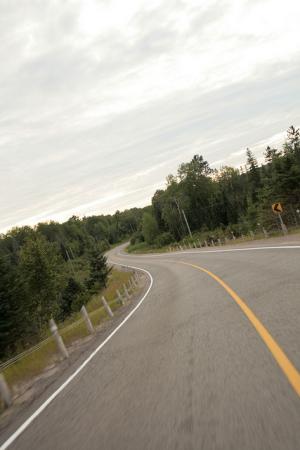 Looking down the barrel of the famous Buckhorn Road.
Looking down the barrel of the famous Buckhorn Road.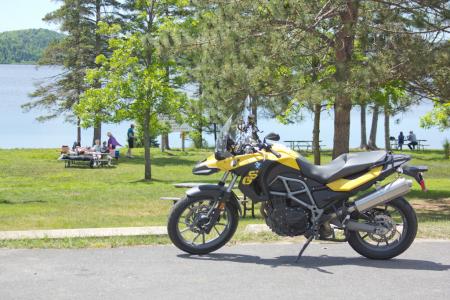 A BMW GS taking a break on Highway 60 in Algonquin Park.
A BMW GS taking a break on Highway 60 in Algonquin Park.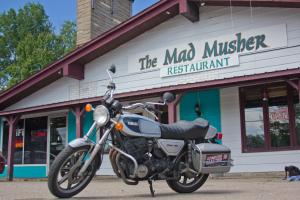 The Mad Musher Restaurant in Whitney, ON – amazing burgers!
The Mad Musher Restaurant in Whitney, ON – amazing burgers! Eau Claire Gorge, on Highway 17 near Bonfield.
Eau Claire Gorge, on Highway 17 near Bonfield.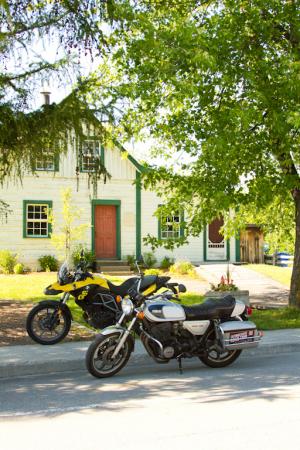 Maison Pierre Moffat, Ville-Marie, QC
Maison Pierre Moffat, Ville-Marie, QC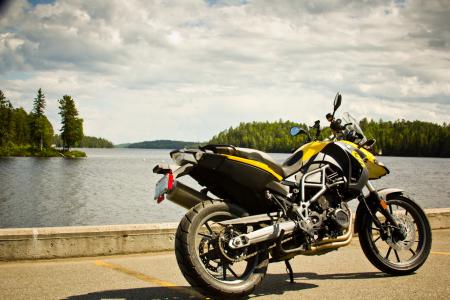 Lac aux Brochets, QC
Lac aux Brochets, QC Highway 101, QC
Highway 101, QC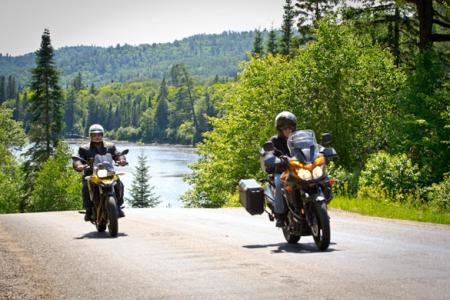 Ontario's Tail of the Dragon - Highway 129
Ontario's Tail of the Dragon - Highway 129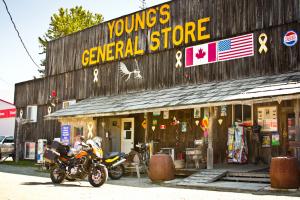 Stocking up on snacks and treasures at Young’s General Store in Wawa.
Stocking up on snacks and treasures at Young’s General Store in Wawa.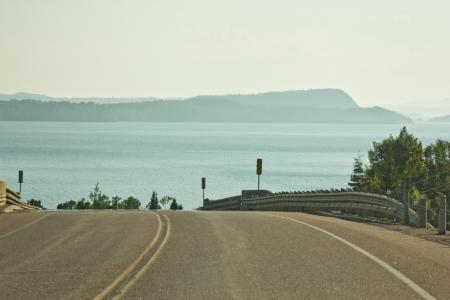 Approaching Agawa Bay on Lake Superior.
Approaching Agawa Bay on Lake Superior. Lake Superior
Lake Superior






